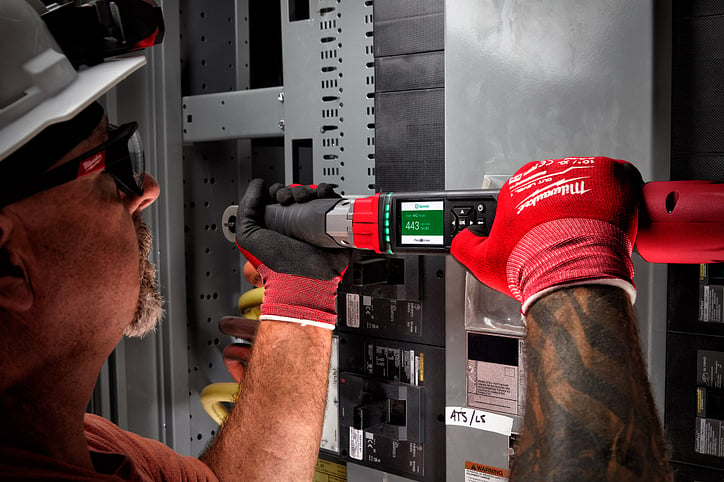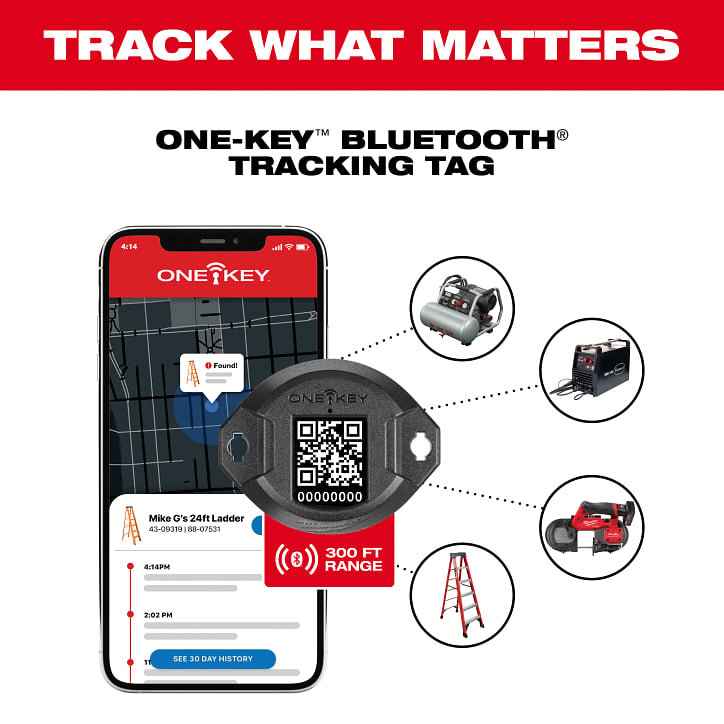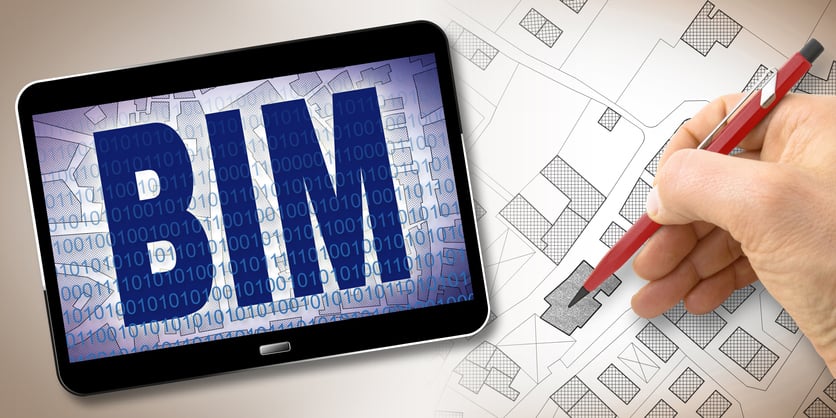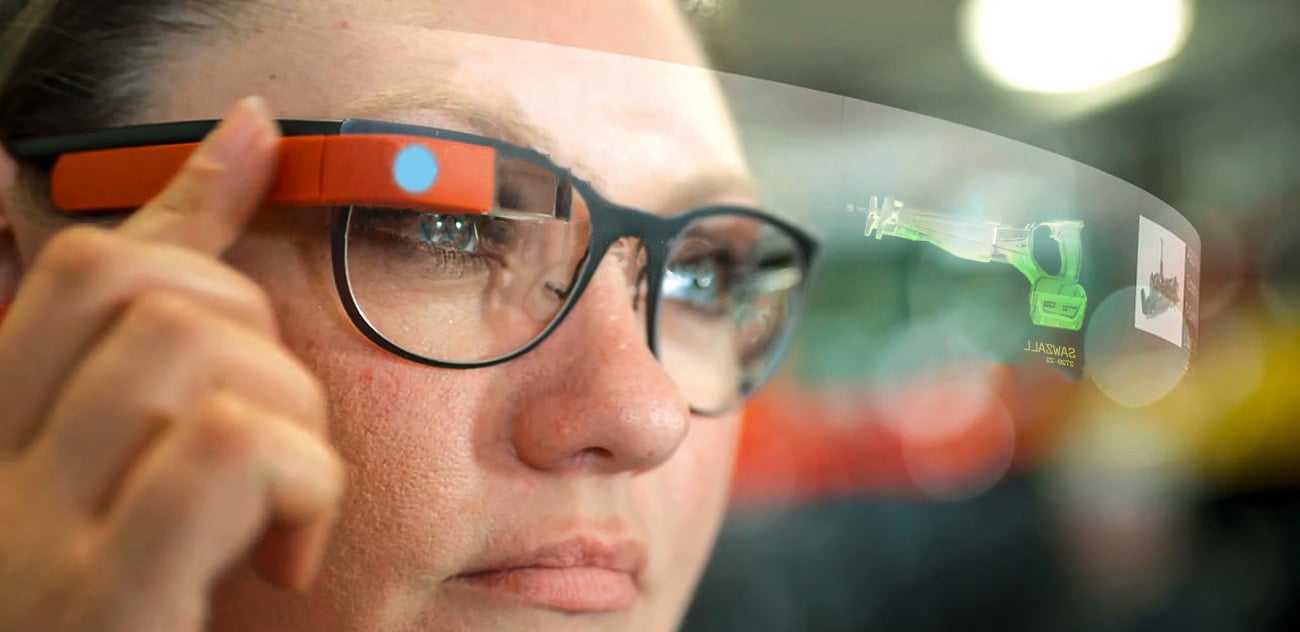
There is an ocean of data crashing and flowing all around us. Most of us swim in this ocean every day, both consuming and contributing to it, only sticking our heads up long enough to catch a breath before diving back in.
Together we create a staggering 2.5 exabytes (EB), or 2.5 quintillion bytes of data every day–enough to fill 10 million Blu-Ray discs.
What are we to do with all of this data (i.e., how do we leverage data created on jobsites)? And what happens when the ocean grows beyond our ability to make sense of?
In this article, we will explain what big data is, layout some of the barriers to its adoption, and explore a few of the ways it's being successfully used in the world of construction.
Big Data Definition: What Is Big Data?
Big data can mean different things depending on whom you ask. In general, though, big data is the name we use to refer to any dataset that is too large, too fast, and too complex for ordinary computers to process.

The idea of Big Data is often broken down into what’s called the Three V’s of Big Data: Volume, Velocity, and Variety:
- Volume: The sheer and growing scale of data.
- Velocity: The rapid and ever-accelerating speed with which data arrives and is acted upon.
- Variety: The diverse and constantly proliferating types of data at play.
The concept of big data has evolved, however, to include a number of other important identifiers. Here are a few that have been added into the mix in recent years:
- Veracity: The accuracy or trustworthiness of the dataset.
- Visualization: The extent to which the dataset is translated into a comprehensible form that can be acted upon.
- Value: The worth that is unlocked once the dataset is captured and analyzed.
Humans have always created and used information, but the advent of computers, the Internet, smart devices, and the Internet of Things has created an exponential explosion in raw, unstructured data—the ever-growing “bigness” of which has required us to reevaluate how we think about and interact with the information we create. Indeed, the datasets that many industries and organizations now work with are so large that they can only be captured, stored, and analyzed with highly specialized super computers and data analytics tools.
So, how big are we talking here? The numbers are truly mind-boggling. It’s estimated that about 4 billion people (a little more than half the world’s human population) own and use a smartphone, devices that are capable of astonishing feats of tracking and data collection. Every single day, we write roughly 500 million tweets and 294 billion emails. Meanwhile, Facebook’s 2.8 billion users post about 350 million photos and watch 100 million hours of video content–with 95 million more photos and videos shared on Instagram.
And that’s just what’s happening on the surface.
In 2016, we officially entered the rarefied air of the Zettabyte Era, and are already beginning to look beyond it to what comes next. In 2010, the whole of humanity created about two zettabytes (ZB) of data. For reference, a single zettabyte contains 1 trillion gigabytes of data. By 2020, we’d created 64.2 ZB, according to the International Data Corporation, a number that is expected to nearly triple to 175 ZB of data by the year 2025. Put another way, just one zettabyte is enough storage for 10 billion 4k movies, which would take roughly 1.8 million years to watch.
Data is knowledge. And knowledge is power. These days, every click and every page view represent a veritable vein of gold waiting to be tapped into. If correctly harnessed, big data can provide an unprecedented level of deep insight into each other, our technologies, and the worlds–virtual, built, and natural–that we swim through every day.
Construction’s Big Data Problem: Understanding Building Construction Data
The construction industry stands to benefit enormously from all the data it produces. Besides driving high level decision making, the insight gained from big data can increase productivity, improve safety, and reduce waste on the jobsite.

By harnessing big data, construction professionals can predict outcomes with greater clarity, discover relationships between seemingly disparate datasets, identify market and sales opportunities, and learn the larger hidden patterns that govern the fate of their enterprises.
It should come as little surprise, however, that the construction industry has yet to fully take advantage of everything that this nascent technology has to offer. According to a recent report by management consultancy FMI Corp., a staggering 96% of the 2.5 quintillion bytes of data the that the construction industry produces every day goes completely unused.
FMI has identified several pain points as the reasons behind construction’s slow uptake of big data.
- Lack of tools and knowledge
- Uncertainty of end goal
- Lack of integration
We’ve summed these pain points up below.
1. Lack of tools and knowledge
Remember, big data is characterized by its incredible complexity and difficulty to process. Accessing and deciphering it isn’t exactly something that a general contractor can easily do from their laptop. Capturing, storing, and analyzing big data is a challenge for anyone, let alone someone who’s more focused on the physical nuts and bolts of construction. To fully take advantage of big data, construction professionals need to first understand what they stand to gain from it. Once they have a clear idea of precisely what they wish to accomplish, the next step is to invest in the proper software, network architecture, and data analytics tools. This can be a tall order for someone working alone.
2. Uncertainty of end goal
Every construction company is different, as is every construction job, and the role of data for each one will change depending on the circumstances. Having the understanding and computational power is one thing, but none of that matters if you don’t have the expertise to put big data into action. Contractors and larger companies should therefore consider hiring a dedicated construction technologist to handle the heavy lifting of big data analytics.
3. Lack of integration
It takes a lot of disparate departments and teams working in tandem to make any construction project a success. All too often, however, a project’s various stakeholders end up siloed off from one another, with their individual unstructured datasets scattered across different devices, computers, and other storage systems. Construction professionals must therefore endeavor to be more mindful of their data and ask themselves if it’s possible to break down the silos and create a shared informational ecosystem between departments. That’s why, for example, at Milwaukee® Tool we’re passionate about reducing friction caused by data silos; we believe it is our role as a data contributor to create systems of truth (data hubs) to help empower cross-functional teams work better together. Examples of this include helping feed project data to the design team at a high level, or getting more granular by sharing data created in digital torque wrench reports with stakeholders. Data & integrations like this, in fact, represent a critical pillar of our app.
Construction Data Sources: How Big Data Is Transforming the Construction Industry
Despite the growing pains, big data has managed to make its presence felt in the world of construction, powering some of the industry’s most revolutionary advances. Let’s take a closer look at some of the ways that big data is currently being captured and put to use in the world of construction.
1. Big data and smart tools
The internet has changed not only how we connect with each other, but how we interact with and quantify the world around us. The IoT, or Internet of Things, is the next evolutionary leap forward, opening up a whole new digital frontier ripe for exploratory data mining. Each new device and everyday object that’s imbued with connectivity represents a potent source of data. In construction, the IoT devices that offer the most exciting possibilities are smart tools.

The tools we use on the job have always been excellent sources of information, though we’ve only recently gained the ability to capture and synthesize it all. What is the exact physical location of each tool? Which teammate is using a tool from one moment to the next? When is a tool due for maintenance or repair? How many rivets or screws did a tool put into place during a particular window of time? Are torque and other settings optimally calibrated for the job at hand? These kinds of questions can now be answered with precision and ease thanks to Milwaukee’s ever-growing line of digitally interconnected smart tools, which come with BLE technology embedded into their frames. Even items that aren’t built “smart” can be transformed into valuable sources of data when they’re fitted with one of Milwaukee’s Bluetooth Tracker tags. 
The scale of big data comes into the picture when we’re talking about not just one or two tools, but entire inventories of them. Whether you’re a general contractor or a larger construction firm, it can be a real challenge to keep track of hundreds of expensive power tools and heavy pieces of equipment. Modern advances have made it easier than ever to translate these mission critical assets into individual data points, but organizing the sum total into a functional form remains difficult without some extra help.
This is where specialized software platforms like One-Key come in. Our free-to-use app provides a clean digital interface from which your whole inventory, no matter how vast, can be remotely tracked, managed, and manipulated. Whether you’re accessing it from a mobile device or a desktop computer, One-Key streamlines the complex task of itemizing and organizing each of your most valued assets, allowing you to rest easy knowing that everything is in its right place.
2. Big data in BIM
BIM, or Building Information Modeling, is where big data really shines in the world of construction.

Displacing CAD as the design tool of choice, BIM has completely transformed how construction teams envision, design, and collaborate on building projects. With BIM, architects, engineers, and project managers can generate highly detailed, multi-layered virtual simulations of a structure throughout every phase of its lifecycle. These data-rich 3D models can then be explored from any angle, either from a bird’s-eye view or up close, like the POV in a videogame.
Each element, down to the electrical wiring, plumbing fixtures, and building materials can be entered into the visualization. These elements can then be tweaked, the model automatically updating to register how an individual change affects the project as a whole. BIM also integrates the “invisible” datasets behind each interlocking element and system, whether it’s the tensile strength of a building’s steel frame or the estimated wattage of its rooftop solar array. The functionality of BIM goes deeper still, with multiple “dimensions” that simulate not only the spatial design of a building (3D), but also how much time (4D) it will take for each phase to be completed, advanced projections of cost (5D), and estimated energy efficiency (6D).
All of which is to say that BIM is an incredibly data intensive technology. By leveraging the big data of BIM, projects can realize productivity increases in the range of 75 to 240% and completion times shortened by about 7%.
Just a quick callback to the importance of creating software ecosystems through integrations, our recent integration with Autodesk® BIM 360® is just one example of how inventory managers and BIM specialists can collaborate and share important project details.
3. Big data in other areas of construction
The construction industry has embraced several other technologies that are contributing to the big data ecosystem. Here are just a few of them:
1. GIS: GIS, or Geographic Information Systems, provide digital representations of the physical environments that construction projects are situated within. Besides BIM, GIS is one of the most big data-intensive technologies that the construction industry brings to bear. GIS is an incredibly powerful mapping tool, allowing users to create and explore immersive visual databases of everything from county property records to topographic and bathymetric maps of the Earth’s surface.

2. Drones: Construction drones have become one of the most valuable and versatile tools on the jobsite. Besides providing increased safety, they are also excellent vehicles for big data collection. Every photograph and minute of footage collected by a drone represents a potentially vital source of information that can inform decision-making down the line. Drones are especially useful when outfitted with photogrammetry or LiDAR (Light Detection and Ranging). These visualization technologies are essential for surveyors, and they also provide the virtual foundations upon which BIM models are built.

3. Augmented Reality: This next one is less of a contributor to big data and more of a window into it. Smart glasses enhanced with Augmented Reality, or AR, empower users to superimpose informational readouts and visual representations of data directly into their field of view. These virtual apparitions can be interacted with to augment the user’s experience of the physical world. In construction, smart glasses can be deployed for a variety of purposes, including piloting drones and navigating the data-streamed halls of a BIM simulation.

4. NFC: Objects embedded with NFC, or Near Field Communication chips are able to rapidly and securely communicate with one another, turning everything from credit cards to power tools into valuable sources of data. Much like RFID (Radio Frequency Identification) and Bluetooth, NFC provides a short-range radio connection that makes it possible for two objects to share information at a touch. Durable and very low-energy, NFC is one of the foundational technologies of smart tools and is poised to advance the cause of big data in the area of inventory management.

Bottom Line
The construction industry has a long way to go before it’s in a position to take full advantage of all the data it creates every day. Looking ahead, big data is expected to be the rocket fuel that drives a variety of game changing technological developments, including smart cities, machine learning and Artificial Intelligence. Each of these advances could have enormous implications for the entire world, and construction in particular, as the reality of climate change necessitates the rapid and intelligent creation of a more sustainable form of construction. In fact, in order to leverage the capabilities of ML and AI, you need to already have a BIG DATA set. Now is the time for contractors to start collecting/mining data.
For its part, FMI describes big data as “the new oil.”
“The [construction] organizations that take the time to gather the data, analyze it and turn it into actionable insights will gain a competitive advantage,” the company’s report on the subject reads. “The ones that bury their heads in the sand and hope it goes away will be quickly left behind.”
The extent to which individual contractors and construction companies embrace and invest in big data remains to be seen. As the saying goes, the data will speak for itself.